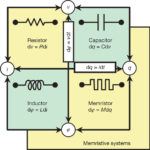 “Passives” in general within the electronics community are devices that do not drive or transmit power or signals. Passive Sensors do not control electricity directly and do not require external power sources to accomplish control of an electrical signal. Examples of passive components are resistors (R), capacitors (C), inductors (L), transformers, antennas, potentiometers (variable resistors), diodes (one-way conductors) and the like.
“Passives” in general within the electronics community are devices that do not drive or transmit power or signals. Passive Sensors do not control electricity directly and do not require external power sources to accomplish control of an electrical signal. Examples of passive components are resistors (R), capacitors (C), inductors (L), transformers, antennas, potentiometers (variable resistors), diodes (one-way conductors) and the like.
Some would say that filters are passives, but since many filters are op-amps, which require a voltage supply, the term filters would need to be limited RLC/RC filters in order to qualify as a passive device. Others might say that switches are passives, and this would apply to switches that do not require a source of electrical power to work.
Connectors, insulators, and heat sinks can be considered as passive but are not often discussed in the realm of “passive components” for unknown reasons. At the systems level, you will find powered devices classified as passive due to the fact that the entire system might only receive and not drive or transmit in order to accomplish a goal. One case is NASA space sensors used to detect low power emissions; some power is required to receive the signals, but there is no transmitter that pings and receives a reflected signal for analysis. A passive temperature sensor might be an element that changes its resistance in proportion to environmental temperature changes.
Active components or products require an external power source in order to control current and/or voltage to accomplish a purpose. Active devices might transmit energy or drive a signal. An active device might transmit a signal and wait for a reflected signal to determine distance, as in the above NASA example. Active devices in electronics include any device that needs a supply voltage, or a set level of energy to perform a task. Many semiconductor devices are active.
Some examples of active devices include solenoids, relays, LEDs, and microcontrollers or any other integrated chip that uses an external supply voltage (or current) to perform work or the intended function. LEDs are light emitting diodes, and we state above that diodes are considered passive. However, in the case of LEDs, the intent for an LED is to control emitted light (on or off; Red, Green or Blue). It’s a side effect that LEDs are also diodes and allow current to flow in only one direction.
In the discussion of passives versus actives, it can be said that proper classification is somewhat subjective and open to discussion, especially as we uncover new technologies. (The memristor is a passive circuit element. Check it out.)

